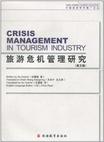旅游危机管理研究
出版时间:2010-11 出版社:旅游教育出版社 作者:谷慧敏 页数:326 译者:王向宁
前言
In 1979 China started the policy of reform and opening-up. During thesethirty years of development, the tourism industry has gained valuableexperiences in all phases of modernization, industrialization and marketiz.ation.However, in the early years, the real focus of the policy was to earn hardcurrency from the inbound tourists. Today a new strategy has been initiated todevelop the three main tourist markets——inbound, outbound and domesticmarkets. In the early stages, the tourism management organizations integratedthe needs of both the government authorities and the private entrepreneurs.The current situation is that tourism associations and commercial enterprisescooperate under the supervision of the government authorities. In the earlyyears, the tourism operations were labor intensive with management mainlybased on experience. Today's industry is driven by business innovations andsupported by modern technology and capital operation. China's tourismindustry not only merges gradually into the nation's economic and socialstrategic development system, but also plays a leading role in internationaltourism community.
内容概要
《旅游危机管理研究(英文版)》内容包括旅游危机管理理论研究、旅游与危机、突发性危机对旅游业的冲击、激活旅游市场机制、我国旅游业危机冲击与激活市场的实证研究——以SARS为例、国外针对突发性危机冲击与激活旅游市场的实证研究、我国旅游业应对未来突发性危机的对策建议。《旅游危机管理研究(英文版)》是原书的英文版,有利于国外同行了解中国旅游研究的成果。
作者简介
谷慧敏,教授,经济学博士,北京第二外语学院旅游管理学院副院长,中瑞酒店管理学院(筹)副院长,中国饭店产业研究中心主任。《Touri Sill Management》(英国)、《Journal of Travel Research》(美国)、《旅游管理》编委,亚太旅游协会(APTA)成员,澳大利亚旅游与酒店教育国际中心专家委员会成员,国际饭店、餐馆、机构性教育理事会(I-CHRIE)成员,美国休斯敦大学希尔顿饭店管理学院高级访问学者,并参与国内外多家著名饭店集团工作。主要著作《饭店管理理论与应用研究》、《国外著名饭店集团管理精要》、《旅游市场营销》等。在《Cornell Quarterly Hotel&Restaurant Admini Stration》、《Journal of Vacation Market ing》等杂志发表多篇学术论文。主持和参与北京市哲学社会科学规划项目·北京市教委人丈社会科学研究计划等课题,并获北京市哲学社会科学优秀成果奖。
书籍目录
Chapter 1 IntroductionChapter 2 Reaearch on Theories of Tourism Crisis ManagementChapter 3 Tourism and CrisesChapter 4 Impacts of Crises on TourismChapter 5 Tourism Market Rejuvenation MechanismChapter 6 SARS in China:Crisis Impacts and Tourism Market RejuvenationChapter 7 An Empirical Study on Crisis Impacts and Tourism Market Rejuvenation in the WorldChapter 8 Suggestions on Chinese Tourism Industry's Countermeasures Against Future Contingency Crisis in China
章节摘录
插图:Image or reputation is the abstract copy of a thing in the mind of an individual. In the standard game theory of reputations, the conclusion that "reputation can strengthen a promise" is a milestone. In their works on sequential equilibrium in the game theory, Kreps (1990) described the reputation of the economic subject as a kind of "cognition", that is, under the asymmetric conditions, one party keeps updating to include the information delivered during the repeated games between the game players. On the other hand, the establishment of the reputation does not need direct contact with the participants in the game. For example, A could deduce B's behavioral pattern and fondness features by the interaction between B and C. He argued that reputation was the intangible capital for long-term survival (Kreps, 1990). According to the theory oftrading reputation, typically that by Tadelis ( 1998), reputation is the intangible asset ofenterprises, but is attached to and embodied in the name of the enterprise. Tadelis (1998) identified two kinds of reputation effects: Reputation Maintenance Effect andReputation Start-up Effect. The former indicates that good enterprises generally tend tomaintain their reputation more than the poor, and can benefit from it, which in turnencourages them to invest more into good reputation maintenance. In addition, it iseasier for good enterprises (having more strength and competence ) to keep theirreputations than the poor. The latter implies that it is easier for good enterprises toestablish their reputations than the poor, therefore, they under-estimate the ease ofacquiring an existing good name (reputation) that is being assessed by the poorerenterprises in the market place. The Theory of Reputation Information regards reputationas information reflecting the historical record and characteristics ( utility function) of aparticipant. The exchange, spread, shaping of reputation flow, reputation system andnetwork of reputation information become the mechanism of information display,efficiently restricting its distortion, and contributing to increasing trading transparencyand reducing costs involved in such trading. Shenkar and Yuchtmann-Yaar indicatedthat reputation was the result of operations of the social mechanism, under which variousstakeholders "can be regarded as members of the network, connecting with each other atdifferent distances" According to Berger, reputation results from the oral commu-nication of consumers.
编辑推荐
《旅游危机管理研究(英文版)》:中国旅游学术推广文丛
图书封面
评论、评分、阅读与下载
用户评论 (总计0条)
相关图书
- 防汛抗旱专业干部培训教材
- 2007年淮河暴雨洪水
- 河北省重大水问题战略研究
- 2009水文发展年度报告
- 哈尔滨市数字水务总体规划
- 黄河下游河道高效输沙与安全行洪
- 全国水利风景区建设管理与水文化论坛论文集
- 河湖基本情况普查
- 水利普查总体方案
- 灌区专项普查
- 地下水取水井专项普查
- 水利行业能力建设情况普查
- 2009年度中国水利信息化发展报告
- 经济社会用水情况调查
- 水利工程基本情况普查
- 水土保持情况普查
- 河湖开发治理保护情况普查
- 南水北调工程建设新闻集
- 西部劣质地基与基础化学灌浆技术
- 基础知识学习指导
- 关于实行党风廉政建设责任制的规定
- 皮肤病彩色图谱
- 半个月亮
- OS/2 Warp 4 从入门到精通
- 图说老手艺
